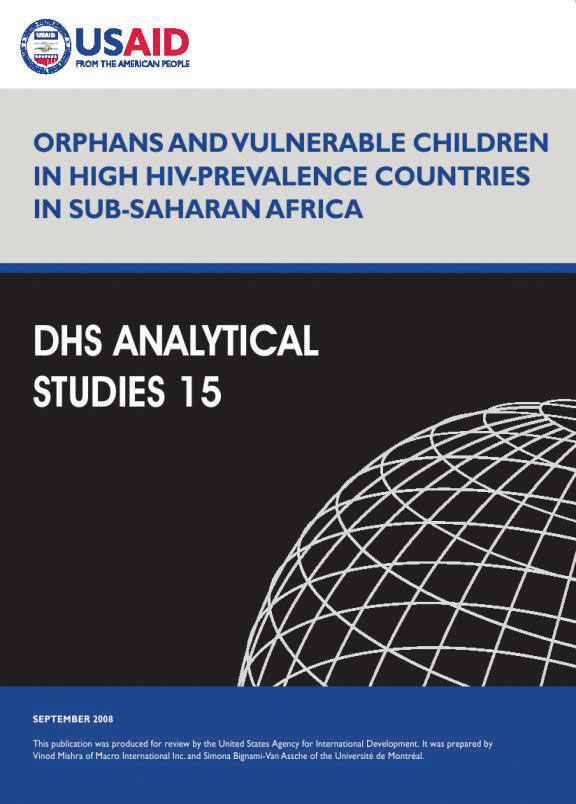- PUBLICATIONS
- JOURNAL ARTICLES
- ACCESS PUBLICATIONS
Publications Summary
- Document Type
- Analytical Studies
- Publication Topic(s)
- HIV/AIDS
- Language
- English
- Recommended Citation
- Mishra, Vinod, and Simona Bignami-Van Assche. 2008. Orphans and Vulnerable Children in High HIV-Prevalence Countries in Sub-Saharan Africa. DHS Analytical Studies No. 15. Calverton, Maryland, USA: Macro International
- Download Citation
- RIS format / Text format / Endnote format
- Publication Date
- September 2008
- Publication ID
- AS15
Download
 Orphans and Vulnerable Children in High HIV-Prevalence Countries in Sub-Saharan Africa (PDF, 1324K)
Orphans and Vulnerable Children in High HIV-Prevalence Countries in Sub-Saharan Africa (PDF, 1324K)
